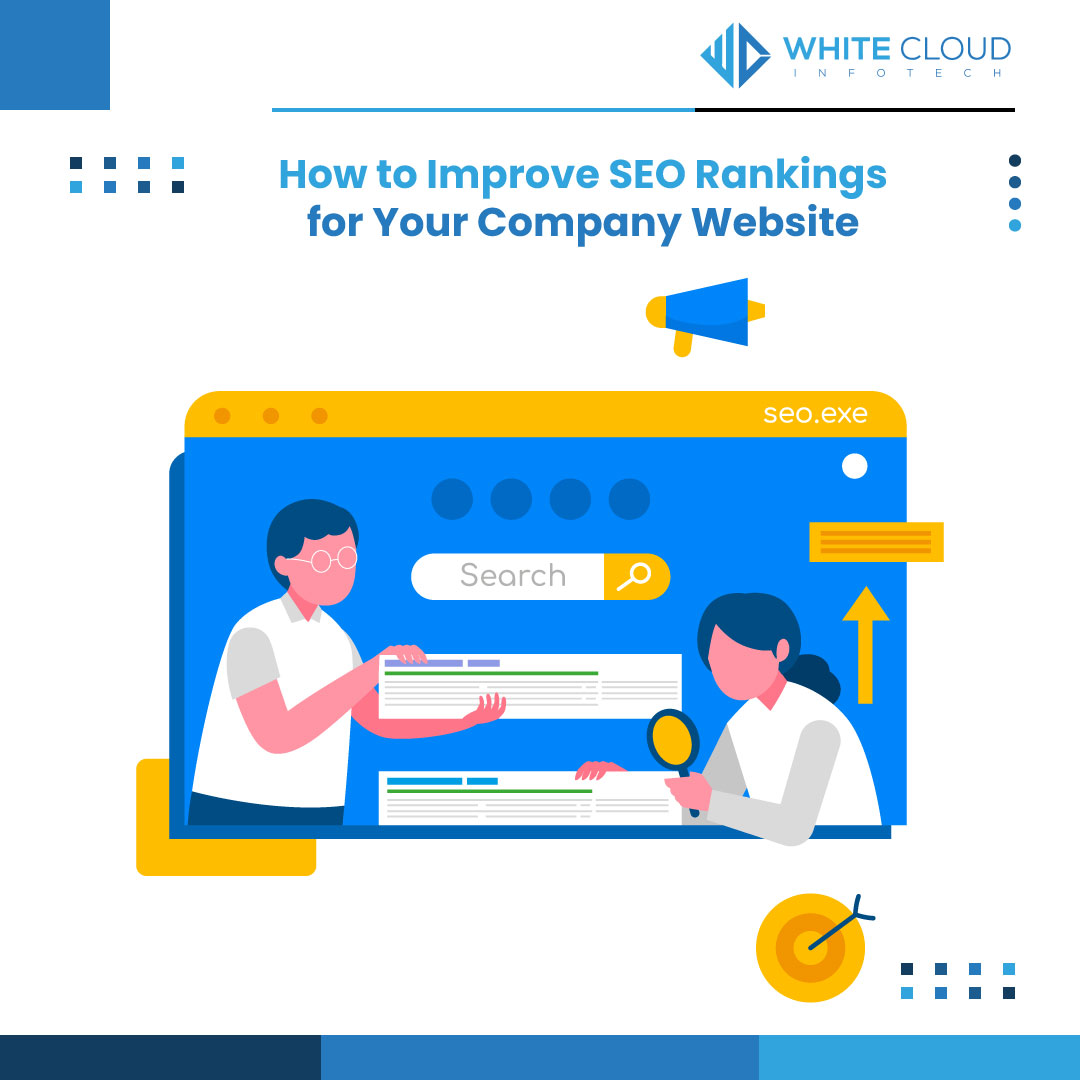
How to Improve SEO Rankings for Your Company Website
Author:Editor, Posted on:09-01-2024 12:33 pm
In today's highly competitive digital landscape, having a robust online presence is essential for any business to succeed. Search Engine Optimization (SEO) is a crucial aspect of improving your company website's visibility and attracting organic traffic. This article offers a comprehensive guide on how to enhance your SEO rankings for your company website. It provides actionable strategies that can help you boost your online visibility and reach your target audience.
Keyword Research and Optimization:
Identify high-ranking keywords that potential customers might use in search engines. Once identified, strategically integrate these keywords into your website's content, meta tags, headers, and URLs to optimize for search engines.
High-Quality Content Creation:
Content is king in the digital realm. Develop informative, engaging, and relevant content that the needs of your target audience. Regularly update your blog with fresh, valuable content to signal to search engines that your website is active and authoritative in your industry.
Mobile Optimization:
Increasing use of mobile devices, Google gives preference to “mobile friendly websites”. When you are hiring the SEO services of
White Cloud Infotech, you will be ensured that your company website is optimized for mobile users, providing a seamless and responsive experience across various devices. Google's mobile-first indexing considers the mobile version of your site as the primary source for ranking.
Page Loading Speed:
A fast-loading website is not only user-friendly but also favoured by search engines. Optimize your website's images, minimize HTTP requests, and leverage browser caching to improve loading speed. Use tools like “Google PageSpeed” Insights to identify areas for improvement.
Optimize Meta Tags and Descriptions:
These snippets provide a brief preview of your content in search engine results and can significantly impact click-through rates. Include relevant keywords naturally and ensure each meta tag is unique.
Build High-Quality Backlinks:
Backlinks from reputable and relevant websites can significantly improve your SEO rankings. Focus on building a diverse portfolio of high-quality backlinks through guest posting, partnerships, and creating shareable content that naturally attracts links. Avoid spammy practices that could result in penalties from search engines.
User Experience (UX) Improvement:
Search engines value websites that offer a positive user experience. White Cloud Infotech optimizes the navigation of your website, improves readability, and ensures that users can easily find the information they're looking for. A positive user experience leads to longer dwell times and decreased bounce rates, which are positive signals for SEO.
Regular Monitoring and Analysis:
Implement tools like “Google Analytics” and “Google Search Console” to monitor your website's performance. Regularly analyze key metrics such as organic traffic, bounce rates, and conversion rates. Use these insights to refine your SEO strategy, identify strengths, and address weaknesses.
Social Media Integration:
Leverage the power of social media to promote your content and increase brand visibility. Social signals may not have a direct impact on SEO rankings, but they contribute to building brand authority and driving traffic to your website.
Conclusion:
Improving SEO rankings for your company website is an ongoing process that requires dedication and strategic implementation. By focusing on keyword optimization, high-quality content creation, mobile responsiveness, and user experience, you can enhance your website's visibility in search engine results.
White Cloud Infotech make certain that regular monitoring and adjustments are done based on performance data. Through the same, your SEO strategy will remain effective and aligned with the evolving landscape of search engine algorithms. Remember, the key to successful SEO is a holistic approach that combines technical optimization, content quality, and user-centric design.
